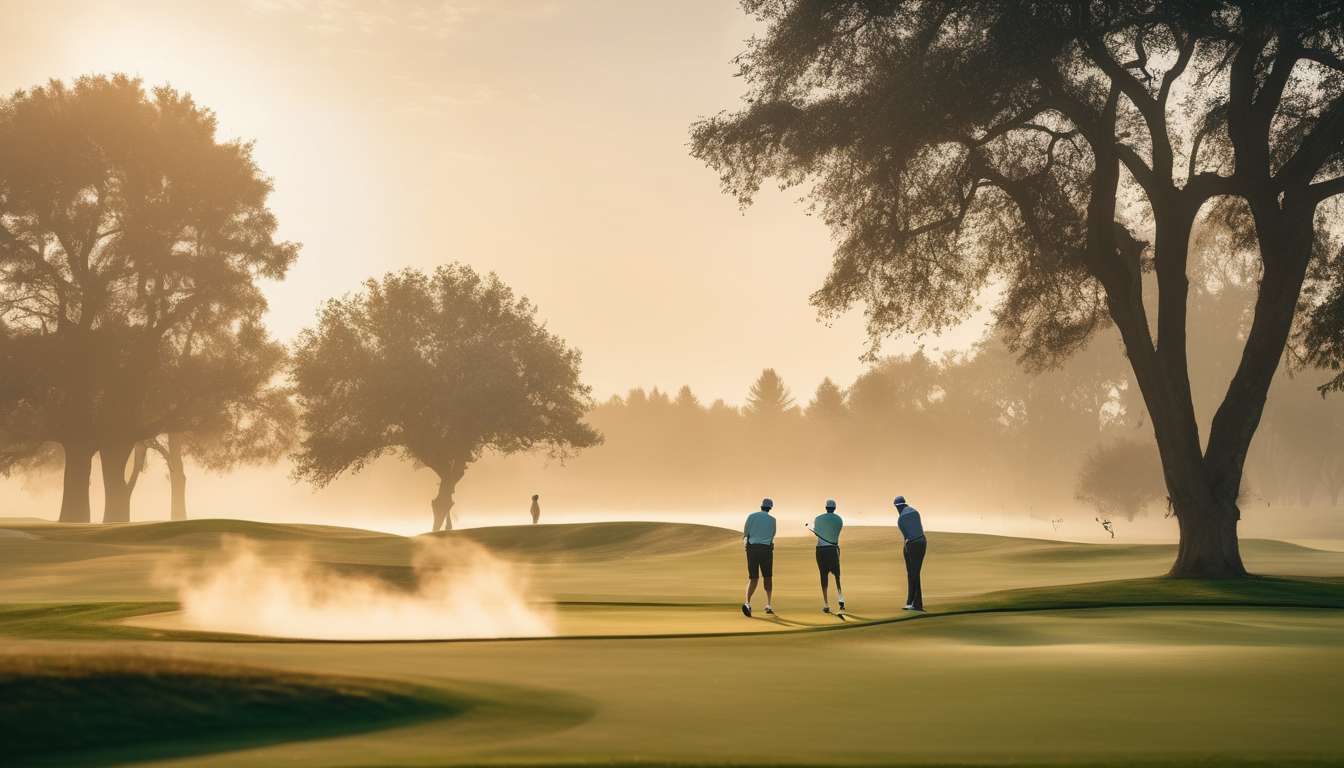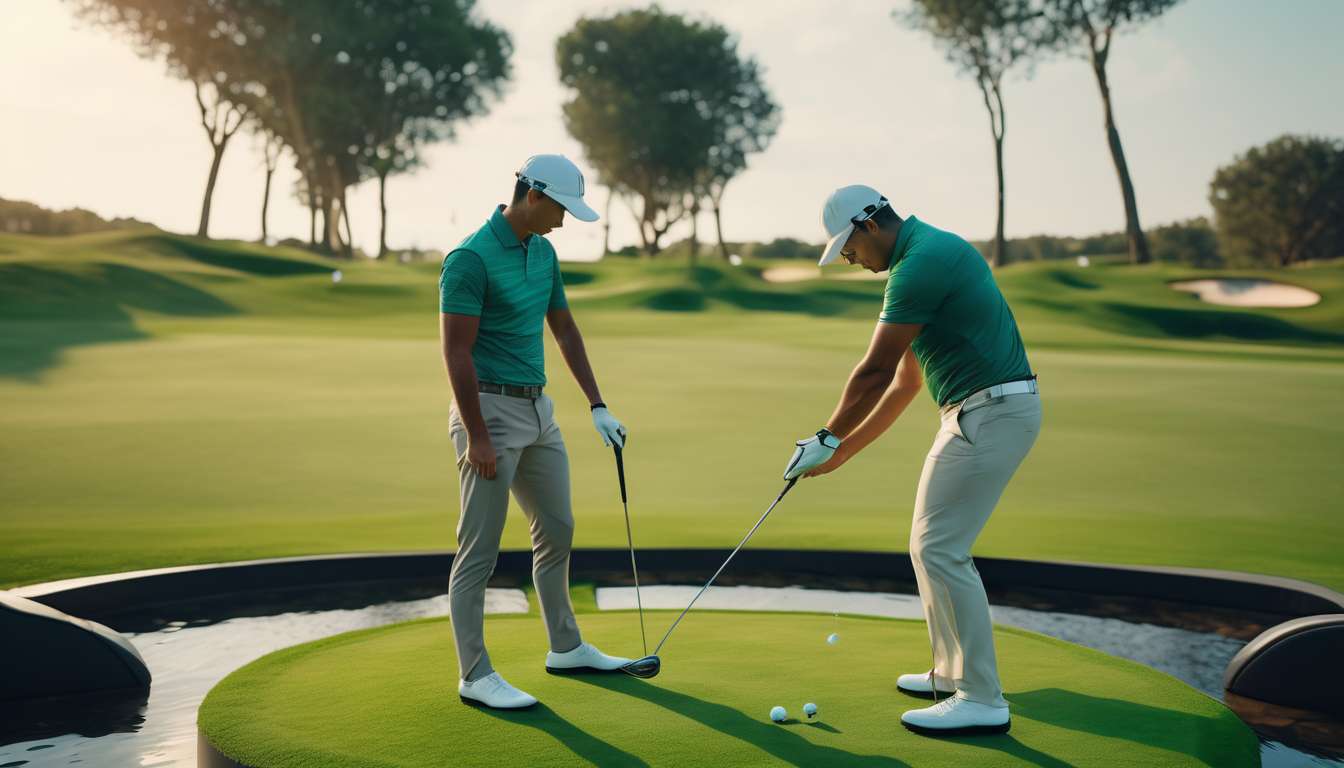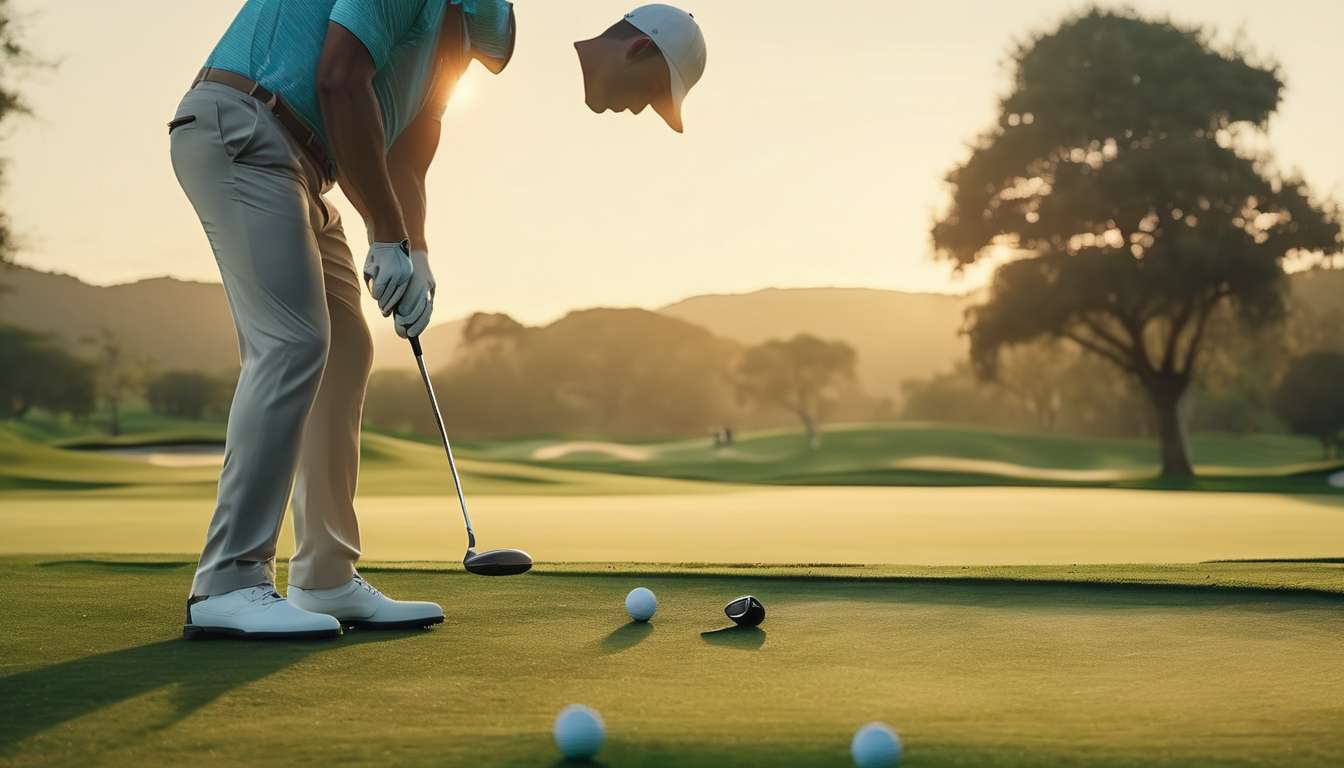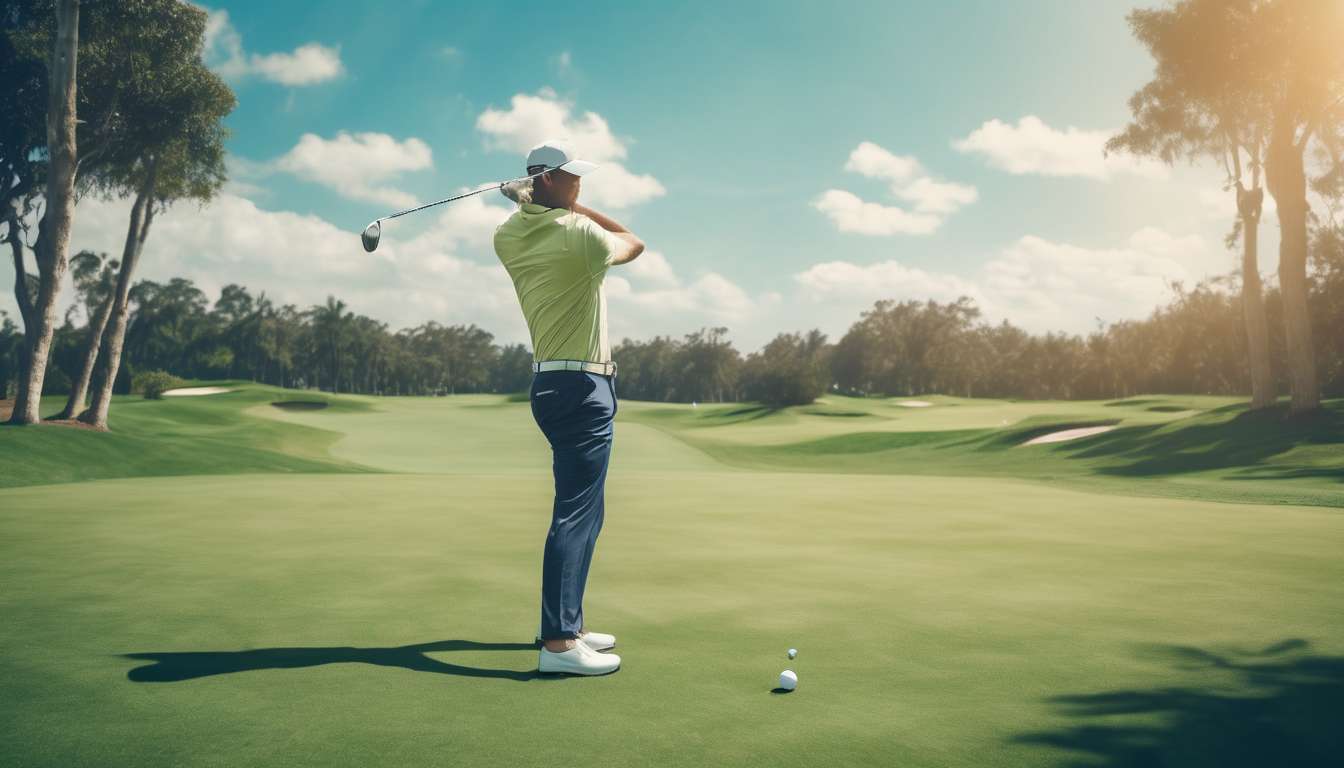As avid golf enthusiasts, we’ve all heard the whispers and tales that circulate around the clubhouse. These myths, passed down like folklore, often shape our expectations and strategies on the green. Yet, how many of these beliefs hold water?
Together, we aim to unravel the truth behind these popular golf prediction myths. From the notion that weather always dictates play outcomes to the belief that certain players are destined for victory based on past performances, we’ve embarked on a quest to separate fact from fiction.
By examining these myths, we hope to refine our understanding of the game and elevate our approach to both playing and watching golf. Let’s delve into the intricacies of these seven myths and discover whether they’re grounded in reality or simply products of our collective imagination.
So, grab your clubs and open your mind as we debunk these golf prediction myths once and for all.
The Weather Myth
Many people believe that weather conditions can drastically alter a golfer’s performance, but this myth oversimplifies the complex nature of the sport. We recognize that weather plays a role, but it’s not the sole determinant of success on the course.
A tight-knit community of golfers knows that preparation and adaptability make all the difference.
We equip ourselves with the right gear to transform what some see as a disadvantage into an advantage. This includes:
- Rain gloves
- Windbreakers
- Specialized balls
When the wind picks up or rain starts to fall, we don’t panic; we adjust. We’ve learned that our equipment can be our greatest ally in unpredictable conditions.
Whether it’s a gusty day or a downpour, making strategic choices on the course can turn the tide in our favor. By understanding that weather is just one piece of the puzzle, we strengthen our camaraderie and elevate our game.
This proves that the so-called "weather myth" is just that—a myth.
The Hot Streak Fallacy
Many golfers believe in the hot streak fallacy, thinking that a series of good performances guarantees continued success on the course. We’ve all felt that thrilling sensation when every swing seems perfect, and it feels like destiny is on our side.
But let’s face it, relying solely on past performance is misleading. Our game is influenced by numerous factors like weather changes, which can quickly turn our confident stride into a cautious step.
We might assume our equipment gives us a consistent advantage, but even the best clubs don’t guarantee a winning streak. It’s easy to get caught up in the camaraderie of shared victories and think they’ll keep coming, but each game presents its own unique challenges.
In our golfing community, we know that while hot streaks feel incredible, they’re not a promise of future triumphs. Let’s continue supporting each other by focusing on:
- Honing our skills
- Adapting to the ever-changing elements of the game
The Home Course Advantage
Home Course Advantage: Myth vs. Reality
Many of us believe that playing on our home course gives us a significant edge, but the familiarity doesn’t always translate to guaranteed victories.
While we know every twist, slope, and bunker, this knowledge can sometimes lull us into complacency. We might assume we have an advantage, but factors like unpredictable weather can level the playing field for everyone. A sudden downpour or gusty winds don’t favor the home player any more than the visitor.
Equipment Considerations
Our equipment plays a crucial role in our performance. Just because we’re on familiar turf doesn’t mean our clubs will perform magic. Our gear must be fine-tuned to handle various conditions, whether we’re at home or away.
Key Points to Remember:
- The assumption that a home course advantage is an automatic win is misleading.
- Golf demands adaptability and focus beyond course knowledge.
Conclusion
Ultimately, while being on our home turf offers comfort, it doesn’t guarantee success. We bond over shared challenges, knowing that golf’s unpredictability unites us all.
The Early Tee Time Theory
Many golfers believe snagging an early tee time can lead to better scores due to calmer conditions and less crowded courses. We often think that morning weather provides a distinct advantage—cool air, gentle breezes, and dew-kissed greens seem to promise a perfect game.
However, this theory doesn’t always hold up. The weather can be unpredictable, and an early tee time might mean battling fog or unexpected chill.
Let’s consider our equipment. We all know that no amount of pristine conditions can compensate if our clubs aren’t up to par. The belief that early rounds automatically offer an edge might distract from focusing on what truly matters: our skills and the right gear.
Moreover, while fewer players on the course might create a sense of ease, it doesn’t guarantee improved performance. Instead, we should concentrate on:
- Consistent practice
- Understanding our equipment
Let’s not rely solely on the clock to dictate our game; rather, let’s hone our skills and adapt to any weather conditions.
The Equipment Miracle
Many golfers hold onto the belief that having the latest high-tech equipment will magically transform their game. We understand the allure; who wouldn’t want the newest gear promising an edge? However, relying solely on equipment as a solution overlooks many critical factors.
Weather conditions often play a more significant role than we might think. No matter how advanced our clubs are, playing in rain or wind requires skill and adaptability, not just cutting-edge gear.
We’ve all seen fellow players with shiny new clubs, convinced they’re gaining some magical advantage. Yet, the truth is:
- Understanding our playing style
- Practicing consistently
These often yield better results. Equipment can certainly complement our skills, but it’s not a substitute for them.
Together, let’s focus on improving our technique and decision-making on the course. Embracing a well-rounded approach rather than chasing the latest equipment ensures we truly belong among the best golfers, regardless of weather challenges.
The Age Factor
Many golfers believe age dictates our performance, but let’s explore how experience and strategy can often outweigh youthful vigor.
Adapting to Weather Conditions
Seasoned players navigate changing weather conditions with an expertise that only years on the course can provide. Their ability to adapt and thrive, even when the skies turn unpredictable, is a testament to the wisdom that comes with age.
Leveraging the Right Equipment
Moreover, the right equipment can level the playing field. With advancements in technology, older golfers can maintain their competitive edge. The perfect club or ball can make all the difference, turning potential disadvantages into advantages.
Understanding of Strategy
Experience brings a deeper understanding of strategy, too.
- We use our knowledge of the course and its nuances to make informed decisions.
- Often, we outsmart younger players with sheer cunning.
Community and Unity
In our golfing community, age isn’t a barrier but a badge of honor. It unites us, reminding us that every swing, every hole, and every round contributes to our shared journey.
The Putting Pressure Paradox
The Putting Pressure Paradox reminds us that while putting is often seen as a straightforward task, the mental challenge it presents can be the biggest hurdle to overcome. We, as a community of golfers, know that the pressure of the green can make or break our game. It’s not just about how well we handle our clubs; it’s about how we handle ourselves under pressure.
Weather conditions often add another layer of complexity. A sudden gust of wind or unexpected rain can turn a simple putt into a daunting task.
Our equipment plays a crucial role, too. The right putter can provide the confidence boost we need, but over-reliance might become a crutch.
We have an advantage when we prepare for these variables by:
- Staying adaptable
- Staying focused
The camaraderie we share on the course helps us face these challenges together, reminding us that we’re not alone in the struggle to master the paradox of putting pressure.
The “Tiger Effect”
The "Tiger Effect" in Golf
Many in the golfing world have felt the undeniable influence of the "Tiger Effect," where Tiger Woods’ presence on the course elevates the competitive atmosphere and inspires players to push beyond their limits. His sheer determination and skill can transform a tournament into a spectacle of athletic prowess. However, some believe that this effect translates into an automatic advantage in predictions, overlooking the nuances of the game.
Adapting to Variables
The real game-changer isn’t just Tiger’s presence; it’s how players adapt to variables like weather and equipment.
-
Weather Conditions: These can level the playing field, forcing all golfers to rely on their adaptability rather than sheer star power.
-
Equipment: This requires constant evolution and precision to maintain an edge. It’s not just about having the best gear, but how golfers use it to adapt to changing conditions.
While Tiger’s influence is legendary, it’s these elements that truly define performance on the course.
How do professional golfers manage their mental game during tournaments?
During tournaments, we professional golfers focus on managing our mental game. Techniques like visualization, deep breathing, and positive self-talk help us stay calm and focused under pressure.
We also rely on routines and rituals to maintain consistency and confidence. By staying present, controlling our emotions, and trusting our training, we are able to perform at our best when it matters most.
Mental strength is just as crucial as physical skill in competitive golf.
Key techniques include:
- Visualization
- Deep breathing
- Positive self-talk
By incorporating these strategies, we maintain focus and composure throughout the competition.
What role does physical fitness play in a golfer’s performance?
Physical fitness is crucial for a golfer’s performance. It enhances:
- Strength
- Flexibility
- Endurance
This leads to more powerful swings and improved consistency on the course.
Our team believes that staying fit not only helps prevent injuries but also boosts overall mental focus during play.
By incorporating regular exercise routines tailored to golf-specific movements, we can:
- Optimize our game
- Strive for peak performance on the greens
How do golfers select the right caddy and what impact does this have on their game?
When choosing a caddy, we look for someone who:
- Knows the course
- Understands our game
- Complements our strengths
A good caddy can:
- Offer valuable advice
- Keep us focused
- Provide moral support throughout the round
Their knowledge and guidance can make a significant impact on our game by helping us:
- Make smarter decisions
- Ultimately improve our performance on the course
Overall, the right caddy can be an invaluable partner in enhancing our golfing experience.
Conclusion
In conclusion, debunking these popular golf prediction myths can help you approach the game with a clearer perspective.
Remember, the following factors may not always determine success on the course:
- Weather
- Hot streaks
- Home course advantage
- Tee times
- Equipment
- Age
- Putting pressure
- The "Tiger Effect"
Key Tips:
- Keep practicing.
- Stay focused.
- Trust in your abilities.
By doing so, you can improve your game and enjoy the sport to its fullest.




